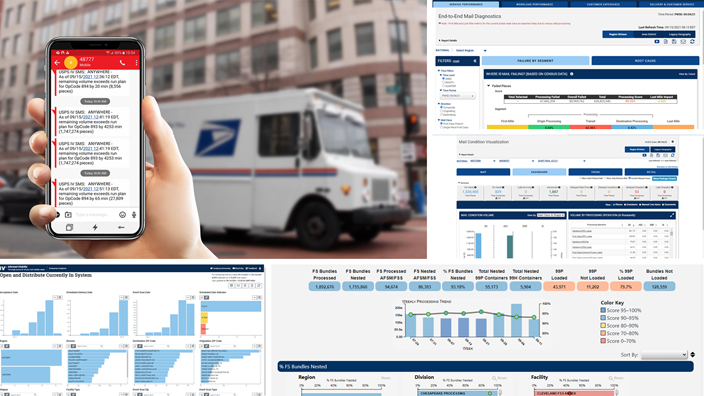The Postal Service is bolstering its efforts to obtain, analyze, share and use data in time for this year’s peak holiday season.
The organization has created the Business Intelligence Capacity Model, or BICM, a program that offers round-the-clock operational insights that show potential gridlock in the postal processing and delivery network before problems occur.
This foresight allows employees to mitigate risks in advance, thereby maintaining steady and consistent operations throughout more than 300 facilities.
“Moving the mail is a sequential process comprised of timely performance, collaboration and both manual and automated efforts,” said Jeff Johnson, the USPS enterprise analytics vice president. “If one element falters, then the overall process is impacted — compromising our mission to deliver according to our set standards.”
BICM helps the Postal Service predict risk by hour at the facility level, providing local managers with answers to questions like, “Are we properly staffed by tour?” and “Is all processing equipment operational?”
BICM uses analytics along with webcam footage of physical staging areas and dock traffic to provide real-time snapshots of current plant conditions.
The information gleaned through historical trends, current processing activities and instantaneous video observation is displayed in a convenient online dashboard, providing USPS with a peak season playbook.
“Determining pinch points and potential operational decisions to offset those impacts are crucial,” said Mike Barber, the USPS processing and maintenance operations vice president. “The dependencies of one operation’s impact on the next is felt almost instantly and has a trickle-down effect that requires immediate remediation.”


